Guitar World Verdict
The TC135SC is a charming crossover nylon-string with a good range of sounds and excellent live potential, while the CRN-TS1 presents players with a well-priced Japanese stage-ready acoustic guitar with great build quality.
Pros
- +
CoolTube electronics are excellent.
- +
Built for the stage.
- +
Typically tip-top build quality.
- +
Good price.
Cons
- -
Some may prefer the wider fretboard and 12th-fret join.
- -
If you like a lot of boom in the bass, then look elsewhere.
You can trust Guitar World
Another 60th anniversary – albeit an altogether quieter affair in terms of decibel levels – is being celebrated this year by Japanese acoustic maker Takamine. From humble beginnings at the foot of the mountain that lent the company its name, Takamine has established itself as one of the world leaders in the acoustic field.
Here we have a pair of contrasting instruments: the slope-shouldered dreadnought CRN-TS1 and the crossover hybrid nylon-string TC135SC. The former features a thermally treated top.
This is in order to produce the sound of an acoustic guitar that is in the process of opening up to its full sonic potential. The latter, meanwhile, forms a line behind a new breed in nylon-strings that we began seeing on these shores only a few years ago.
So, what exactly is a ‘crossover’ or ‘hybrid’ nylon-string? Well, imagine that you are familiar with the acoustic guitar to the point that you have very little trouble adapting if called upon to play a couple of acoustic numbers in your set – or just a sing-song in the privacy of your own home.
The neck feels a little different but familiar enough so your fingers don’t feel abandoned in a totally new domain. So all’s well. Traditionally, the same cannot be said for a standard classical guitar.
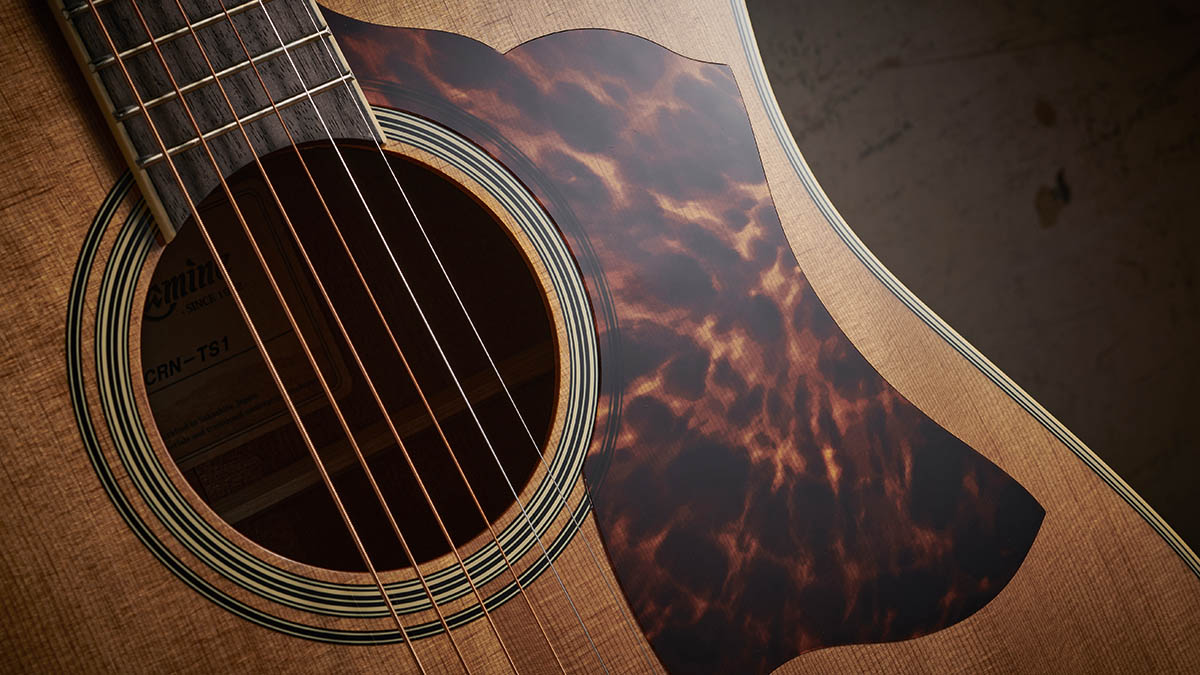
First, there’s the width of the fingerboard to deal with – the main issue for players who want to delve into recreational Latin, bossa nova or jazz and yearn for the sound created by acolytes of Jobim and his contemporaries. It may sound simple enough, but realistically, that fingerboard width alone is quite a lot to ask a dyed-in-the-wool electric player to deal with.
So what if we did the ‘wolf in sheep’s clothing’ bit and gave the nylon-string guitar as many of the characteristics of a steel-string acoustic as we could?
There, in essence at least, is your crossover instrument: a slimmer fingerboard, perhaps a slight camber thrown in for good measure (instead of the flatter radius of a classical guitar), and suddenly the fingers of the happy strummer feel far more comfy and familiar with their surroundings. A bit of a lengthy explanation, perhaps, but we do like to be thorough.
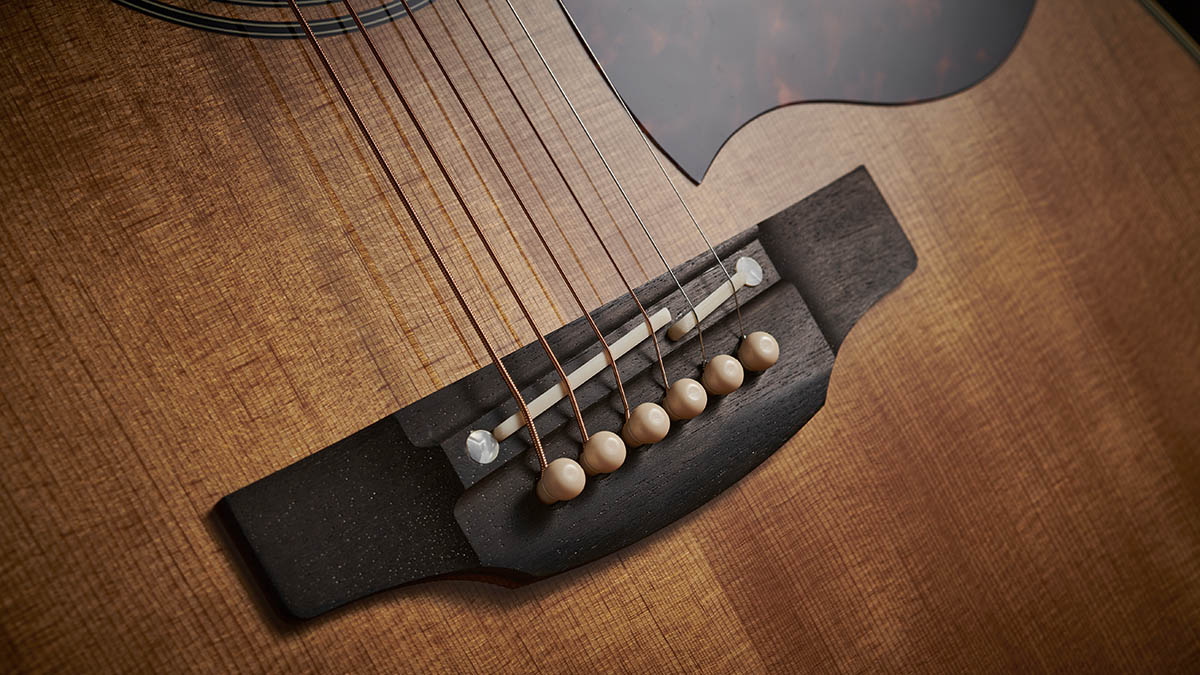
As this pair are both quite different, we’ll take them one at a time and, seeing as we’ve already said so much about it, let’s begin with the nylon-string TC135SC. As we’ve mentioned, many of the features here will look neighbourly to a steel-string acoustic player, but the lines of a traditional classical guitar remain. In any case, the spec certainly sounds very familiar.
We have a spruce top with rosewood back and sides, and whereas you might have been expecting cedar for the former, as many classical guitars use this timber here, it must be said that some flamenco guitars have spruce tops. Unusual, perhaps, but not significantly different.
In fact, the most striking departure from the classical norm is the fact the TC135SC’s neck joins the body at the 14th fret, as opposed to the more accustomed 12th.
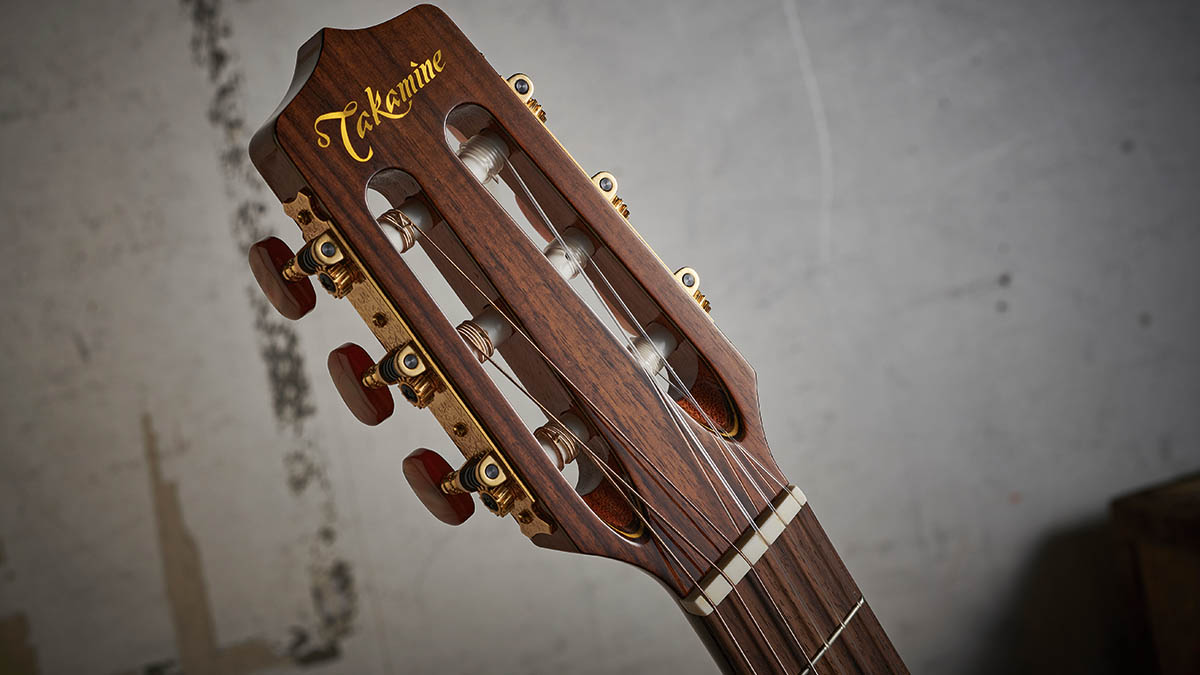
The nut measures in at 47.6mm instead of the 50.8mm found on classical instruments, and although this might not sound like much of a reduction, remember that nylon strings are thicker than steel and require a little more clearance, and so this is probably about as far as you can go before things get a bit crowded at the busy end of the fretboard. It’s actually trimmer than our Yamaha Silent nylon-string in any case.
The Takamine has an extended fretboard that offers a full two octaves on the treble side, stopping two frets shorter on the bass. As you can probably already tell, this is a guitar that is aimed at modern playing styles – and, as we’ve said, it’s probably just the job for the occasional foray into the more gentle side of jazz.
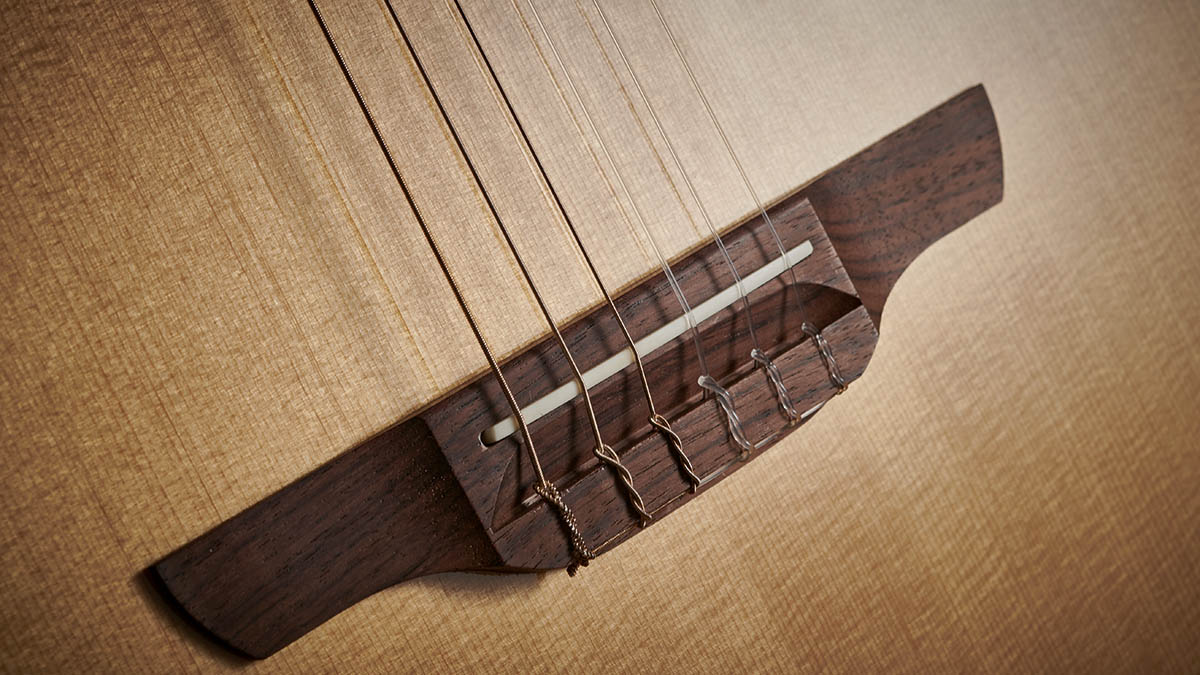
Pickup-wise, there’s Takamine’s renowned CoolTube under-saddle and preamp combo in the form of a CTP-3 with an onboard tuner and an array of tone-shaping possibilities via sliders for low, variable mids (via a separate rotary) and high frequencies with a notch filter.
The CoolTube operates on a 12AU7 dual-triode vacuum tube that runs at very low voltage, and has a separate control that will adjust its character from bright to warm. All in all you have practically everything you need to sculpt your live sound to the nth degree.
Moving on to the CRN-TS1, we’re in more familiar territory, although there are a few features here that are perhaps slightly unusual.
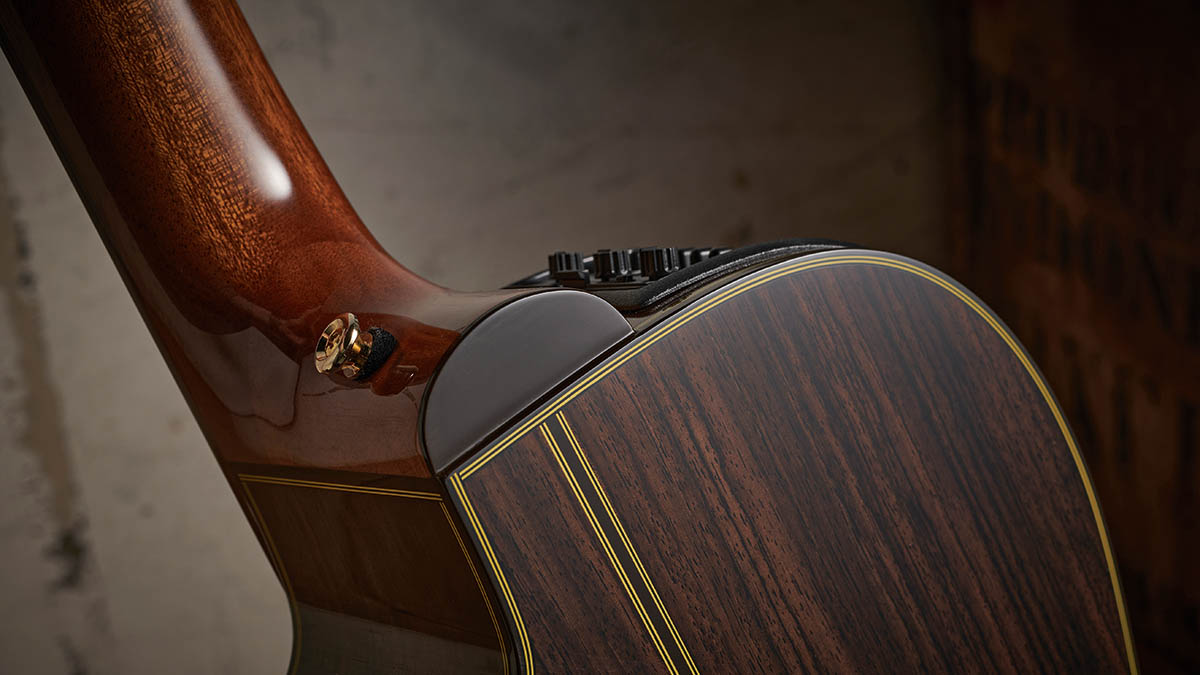
We’ve covered the thermal treatment of the spruce top, but where you might be expecting either mahogany or rosewood for the guitar’s back and sides we have sapele. This is sonically in the same general area as mahogany but is in plentiful supply, as well as being a non‑endangered timber.
Another thing that hits the eye immediately is the 12th-fret body join – a once-familiar attribute in acoustic days of yore, which then gave way to the more ubiquitous 14th-fret join of today.
The slot-head offers a stylish punctuation point to an already good-looking guitar, and amplification duties are once again performed by a CoolTube variant, this time the CT-4BII with a slightly simpler layout of controls than its stablemate – tuner, low, mids, high and volume – but ample to allow prudent tweaking on the live stage.
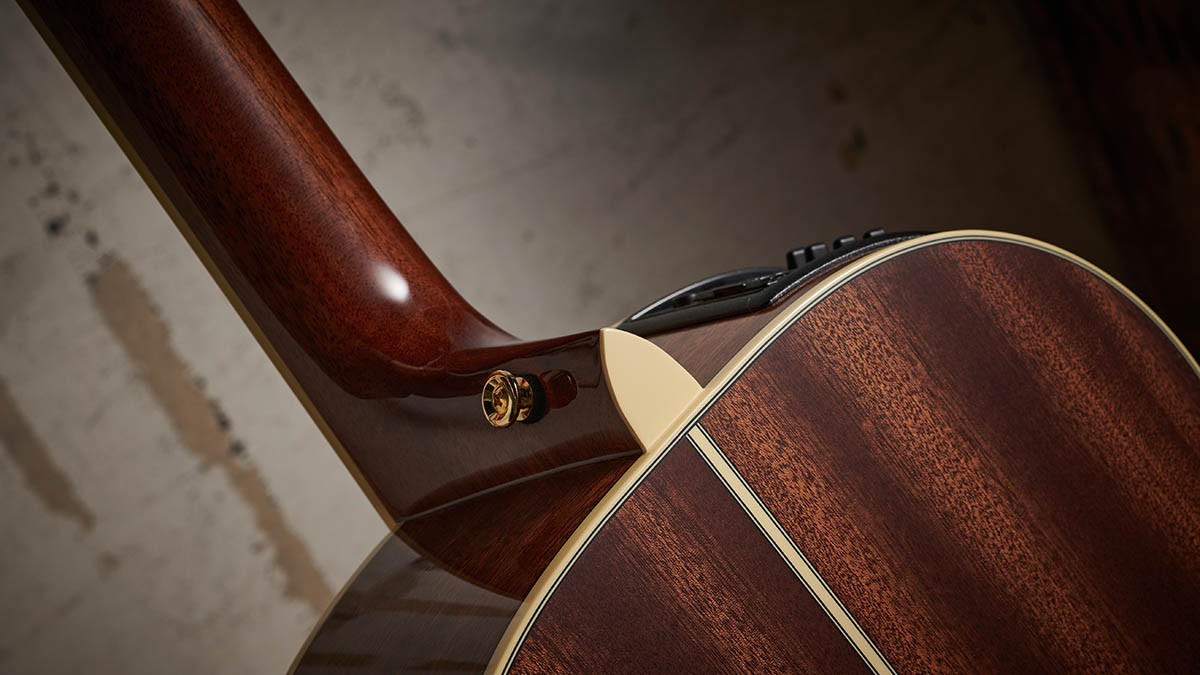
Feel & Sounds
Returning to the TC135SC, the general vibe here is of a well-balanced instrument both in terms of physicality and tone. It’s not the loudest nylon-string we’ve heard, acoustically speaking at least, but that’s quite probably not the point.
This is an instrument built for the stage, after all. But it has a lot of charm, with polite trebles and basses, and our fingers appreciate the more familiar feel of the narrower fretboard.
After just a very short time, we felt completely at home in this department. The neck feels good in the hand – more acoustic guitar-like than the somewhat flatter back of a classical guitar neck, for instance.
The 14th-fret body join might trick the eye if you’re used to a more trad nylon-string, but, again, not for long. Recording using the preamp also gave us a very good sound with the absolute minimum of fuss. We hardly had to tweak the controls before we were happy with what we were hearing.
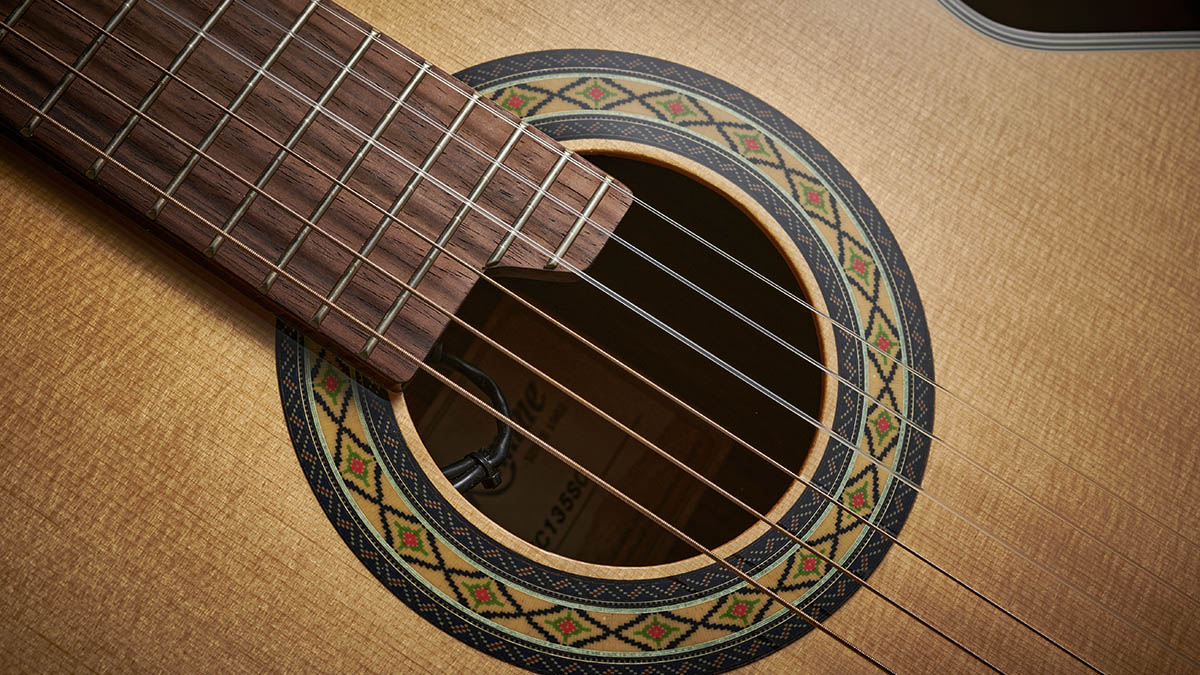
The CRN-TS1 also ticks many of the right boxes. Its generous C-shape neck fits nicely in the hand, although we did find a little roughness to the frets on certain areas of the ’board. Easily put right, but a few more minutes spent with the buffing wheel would not have been a bad idea.
Sound-wise, we heard plenty of shimmer in the trebles but not as much bass as we were expecting from an instrument with a body of this size. This is likely to sort itself out given time because all the body woods begin to sing in unison when the guitar is played on a regular basis.
A well-travelled acoustic guitar generally has a different tale to tell than one that’s fresh from the luthier’s bench. Having said that, it recorded well, delivering the goods without any hassle at all.
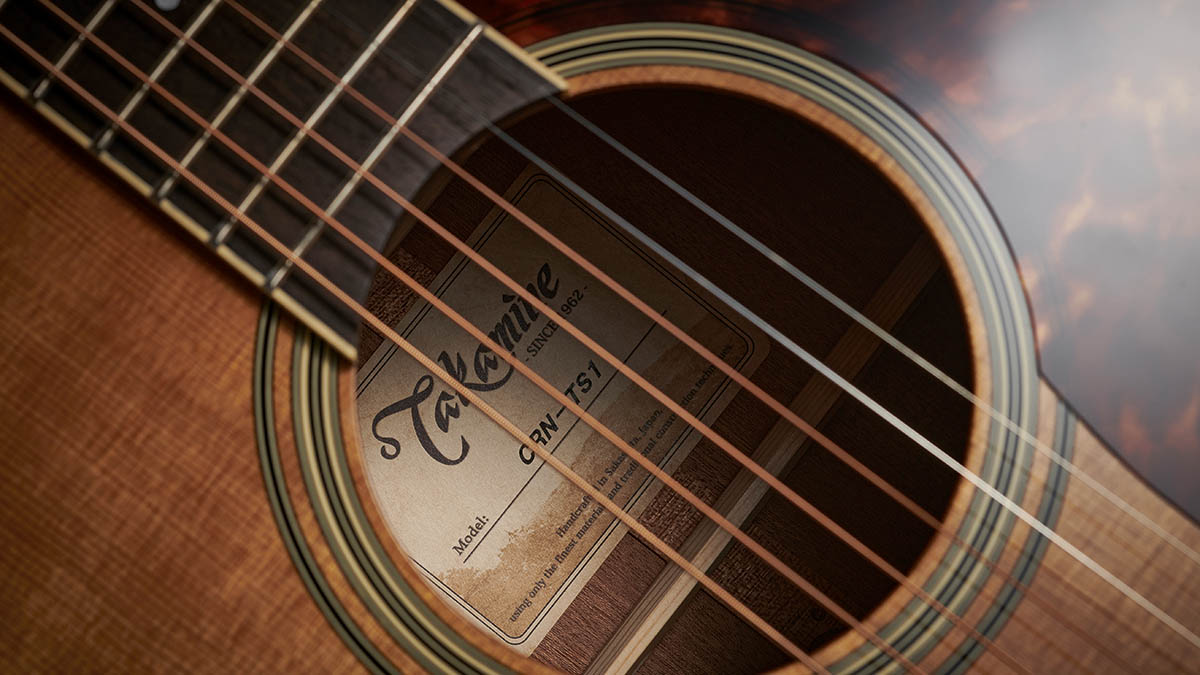
Verdict
Two very different guitars from Takamine. The nylon-string TC135SC charmed us with its gentle voice and ease of playing and the preamp, with its all-encompassing range of controls, would engender confidence in any live situation.
The CRN-TS1 was also a good playing experience, despite that slight dip in bass response, which, it has to be said, was adequately compensated for by the CoolTube pickup system when recording.

With 60 years of experience building acoustic guitars, Takamine is to be congratulated for a catalogue of instruments that fits into practically any playing situation you could choose to dream up.
If your ambitions include a little laid-back bossa, then the TC135SC should definitely be on your list of guitars to audition. If a slope-shouldered dread is your ideal stage companion, you should seek out a CRN-TS1, too. We don’t think you’ll be disappointed.
Specs
Takamine TC135SC
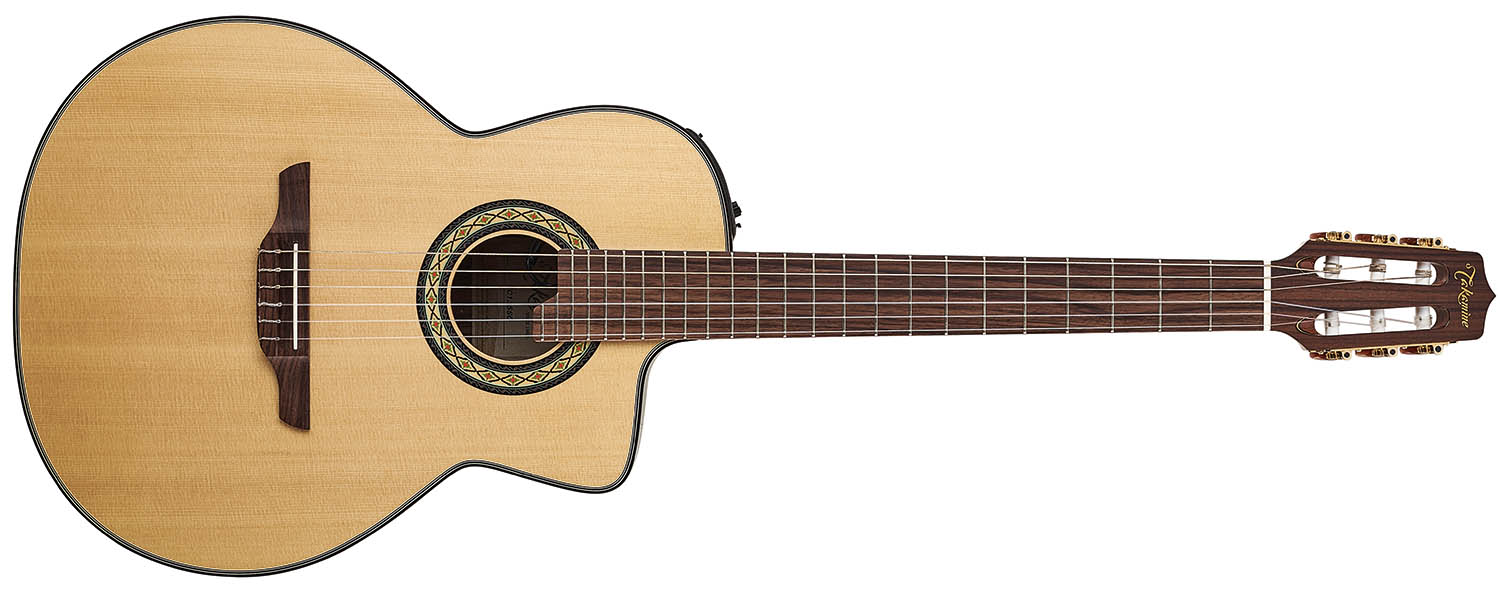
- PRICE: $1,549 / £1,700 (inc case)
- ORIGIN: Japan
- TYPE: Cutaway hybrid crossover classical
- TOP: Spruce
- BACK/SIDES: Rosewood
- MAX RIM DEPTH: 103mm
- MAX BODY WIDTH: 376mm
- NECK: Mahogany
- SCALE LENGTH: 650mm
- TUNERS: 3-a-side classical style
- NUT/WIDTH: 47.6mm
- FINGERBOARD: Rosewood
- FRETS: 24 on treble side, 22 on bass
- BRIDGE/SPACING: Rosewood/59mm
- ELECTRICS: CoolTube CTP-3
- WEIGHT (kg/lb): 1.97/4.36
- OPTIONS: None
- RANGE OPTIONS: Crossover nylon-string guitars are less available, but Takamine has a few alternatives in its range, including the thinline TSP148NC NS (£988) – see website for details
- LEFT-HANDERS: No
- FINISH: Gloss
Takamine CRN-TS1

- PRICE: $1,849 / £1,499 (inc case)
- ORIGIN: Japan
- TYPE: Slope-shouldered dreadnought
- TOP: Thermally treated spruce
- BACK/SIDES: Sapele
- MAX RIM DEPTH: 125mm
- MAX BODY DEPTH: 460mm
- NECK: Mahogany
- SCALE LENGTH: 632mm
- TUNERS: 3-a-side classical style
- NUT WIDTH: 42.5mm
- FINGERBOARD: Ovangkol
- FRETS: 20
- BRIDGE/SPACING: 54mm
- ELECTRICS: Takamine CT-4BII
- WEIGHT (kg/lb): 2.09/4.62
- OPTIONS: None
- RANGE OPTIONS: For thermally treated tops Takamine’s EF360SC-TT (£1,544) and EF400SC-TT (£1,497) are both cutaway dreads. There are other dreadnoughts available across various ranges – see website for more
- LEFT-HANDERS: No
- FINISH: Gloss
- CONTACT: Takamine
With over 30 years’ experience writing for guitar magazines, including at one time occupying the role of editor for Guitarist and Guitar Techniques, David is also the best-selling author of a number of guitar books for Sanctuary Publishing, Music Sales, Mel Bay and Hal Leonard. As a player he has performed with blues sax legend Dick Heckstall-Smith, played rock ’n’ roll in Marty Wilde’s band, duetted with Martin Taylor and taken part in charity gigs backing Gary Moore, Bernie Marsden and Robbie McIntosh, among others. An avid composer of acoustic guitar instrumentals, he has released two acclaimed albums, Nocturnal and Arboretum.
“While the odd corner has clearly been cut, these are true Gibsons with all the individuality that this brand exhibits”: Gibson J-45 Special and Hummingbird Special review
“Fender has stripped back the price – but has it gone too far paring back the sounds, too?” Fender Standard Acoustasonic Telecaster review












